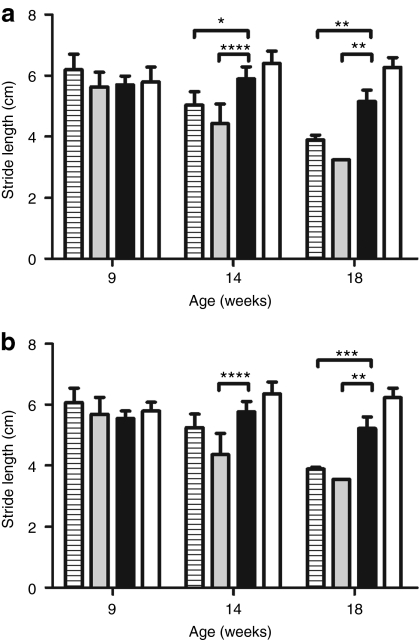Figure 6.
Effect of intrathecal injection on locomotor function. Four-week old Tpp1(−/−) mice were administered three daily 40 µl infusions of artificial cerebrospinal fluid (CSF) (vehicle, gray filled bars) or 10 µg/µl recombinant human TPP1 (rhTPP1) (enzyme, black filled bars) (total dose/animal = 1.2 mg proTPP1) or were left untreated (horizontal striped bars). Untreated unaffected controls (wild type and heterozygotes) are shown for reference (open bars). Fore- (a) and hind-limb (b) stride lengths were measured. Between 4 and 28 (mean, 11) usable measurements were recorded for each animal and these were averaged to provide a mean stride-length per animal. For each timepoint, between two and seven animals were analyzed except for the single surviving vehicle treated animal at 18 weeks. Plots represent the mean ± standard deviation of the mean stride-lengths for all animals in each group at each time-point. Statistical significance between indicated pairs was calculated using the Bonferroni multiple comparison post-test (*P < 0.05; **P < 0.01; ***P < 0.001; ****P < 0.0001).

